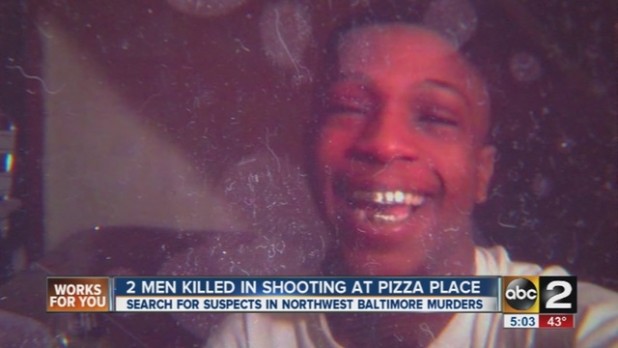Stuff Black People Don’t Like
December 30, 2015
As of December 26, 2015, there have been 626 nonfatal shootings in Baltimore (a 72 percent increase from last year). As this story below notes, the cost of fixing a bullet wound is roughly $14,000, and the blacks who show up at trauma hospitals have no insurance.
Thus, because black people can’t stop shooting one another in Baltimore, roughly $8.7 million has been coughed up by the Maryland taxpayer to pay for theses hospital visits. [Victims of gun violence become larger share of emergency visits in Baltimore, Baltimore Sun, 12-29-15]:
Every time it happens a chorus of alarms sounds — through overhead speakers, cell phones, pagers, and other electronic devices hanging from the necks of emergency room staff at Sinai Hospital.
The “delta code” means another serious trauma is about to arrive at the North Baltimore hospital. Since April, when a spate of violence began in the city, there is a heightened chance it’s someone grievously wounded by a gunshot.
“You hear them go off,” says Dr. William P. Jaquis, chief of emergency medicine at Sinai, one of three designated trauma hospitals in Baltimore. “A team of 15 to 20 people come running. We know we’ll be working harder, with more intensity.”
The emergency rooms at Sinai, Johns Hopkins Hospital and the University of Maryland Medical Center are some of the busiest in the city, each tending to 6,000 to 8,000 patients a month. They see ankle twists and broken bones, chest pains and stomach aches, people severely injured in car crashes – and this year in particular, a soaring number of shooting victims. The gunplay has led to a record number of deaths and turned local hospital emergency rooms into revolving door care centers for victims, and possibly perpetrators, of gun violence.
The number of homicides in Baltimore reached 343 this week, surpassing 300 for the first time since 1999. Murders were 50 percent higher in the first nine months of this year than last. Shootings were up more than 70 percent. Experts aren’t sure why, though much of the violence began in April in the wake of the unrest and riots related to the death of 25-year-old Freddie Gray while in police custody.
While the overall number of people going to emergency departments in the same nine-month time period in those hospitals and eight others in the city was down slightly compared with last year, the number of gun-related injuries has grown. Although the hospitals and staff are equipped to handle technical aspects related to the increased volume, the emotional impact of tending to such daily carnage is a different matter.
Close to two shooting victims a day need emergency care, predominantly at the city’s trauma hospitals, or about 200 more patients than last year. They make up a small fraction of patients overall, but Jaquis says they require far more attention from doctors and nurses than those without such devastating injuries and illnesses.
They also can sap medical providers’ mental energy in a way other patients don’t because of the intensity of their injuries and the senselessness of the violence that landed them in emergency rooms.
The victims are most often young black males, and Jaquis said they frequently have mothers, grandmothers, siblings and friends anxiously standing by in ER waiting rooms hoping to hear that they will survive.
Emergency room doctors and nurses say stress comes with the job, but this year has been tougher. In addition to tending to broken and bloody young bodies, hospital staff had to navigate through protesters and National Guardsmen called to the streets last April, and a barrage of media coverage of the unrest after they got home.
Nurse Ellen Chacon said going home to her more rural community in Carroll County helped her tolerate the past months. Dr. Lisa Kirkland, another Sinai emergency doctor, agreed living outside the city helped, but she felt anxiety driving to work from Harford, another northern county.
“I’d wonder how my day would go,” she says. “The people who got shot, they come in cursing and screaming. They were just kids.”
Researchers and observers say burnout among emergency caregivers can be high, and the victims of violence can weigh more heavily on them. Recent crime spikes in other cities aren’t reaching 1990 levels, said criminologist Sam Bieler.
Baltimore, however, has reached its highest level of homicides per capita.
Bieler, a research associate for the Urban Institute, found in 2010 that Marylanders suffered firearm-related injuries at a rate of 15.5 people out of every 100,000. That’s above the national average of 14.4. Almost 42 percent were males aged 15 to 24. Most were black and 15.6 percent died in the hospital, more than twice the national rate.
The violence cost $12.2 million in care in Maryland; about 84 percent of the victims were uninsured, leaving the hospitals and others in the state to pay the bill. Bieler couldn’t say how many victims have gained insurance since federal health reform largely rolled out in 2014.
Modern shooting victims also are tougher to treat as weapons have gotten more destructive, he said. They tend to cost $14,000 more per patient.
Immediate emotional support for first responders also is being discussed, says Dr. Ben Lawner, deputy EMS medical director for the Baltimore City Fire Department and an emergency physician at the University of Maryland Medical Center.
He says the unrest brought new risks to first responders already used to violence in Baltimore, and protocols aimed at minimizing those risks sometimes added to their burden. Ambulances were given police escorts and assistance in navigating around protesters. Patients were loaded aboard as quickly as possible rather than stabilized at the scene.
“Feeling unsafe in their own city was particularly stressful for them,” he says. “It was a lot of uncharted territory.”
A zombie apocalypse would be easier to contain than the nightmarish blackness descending upon Baltimore. Our ancestors warned us, passing laws to protect the civilization they created and – more importantly – to safeguard their posterity. In fact, restrictive covenants originated in Baltimore as a legal form of residential segregation in Baltimore back in the second decade of the 20th century.
One hundred years later, their attempts to preserve western civilization are proven correct in the food desert that is 65 percent black Baltimore (where the black-run city government actually has created Baltimarket, a food justice program headed by the Baltimore City Health Department).
In a zeal to legalize equality, we overturned these safeguards (now, plexiglas protects the few commercial merchants from the black population they do business with…)
The nightmare of 2015 Baltimore is exactly what they tried to protect us from.
Exactly.
 Daily Stormer The Most Censored Publication in History
Daily Stormer The Most Censored Publication in History



